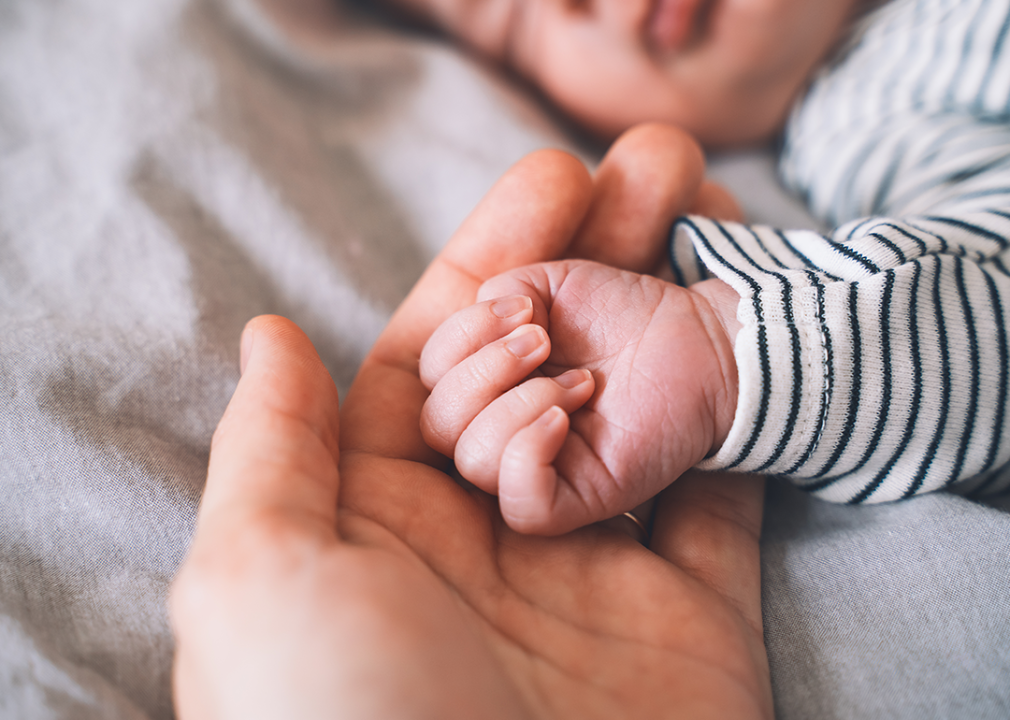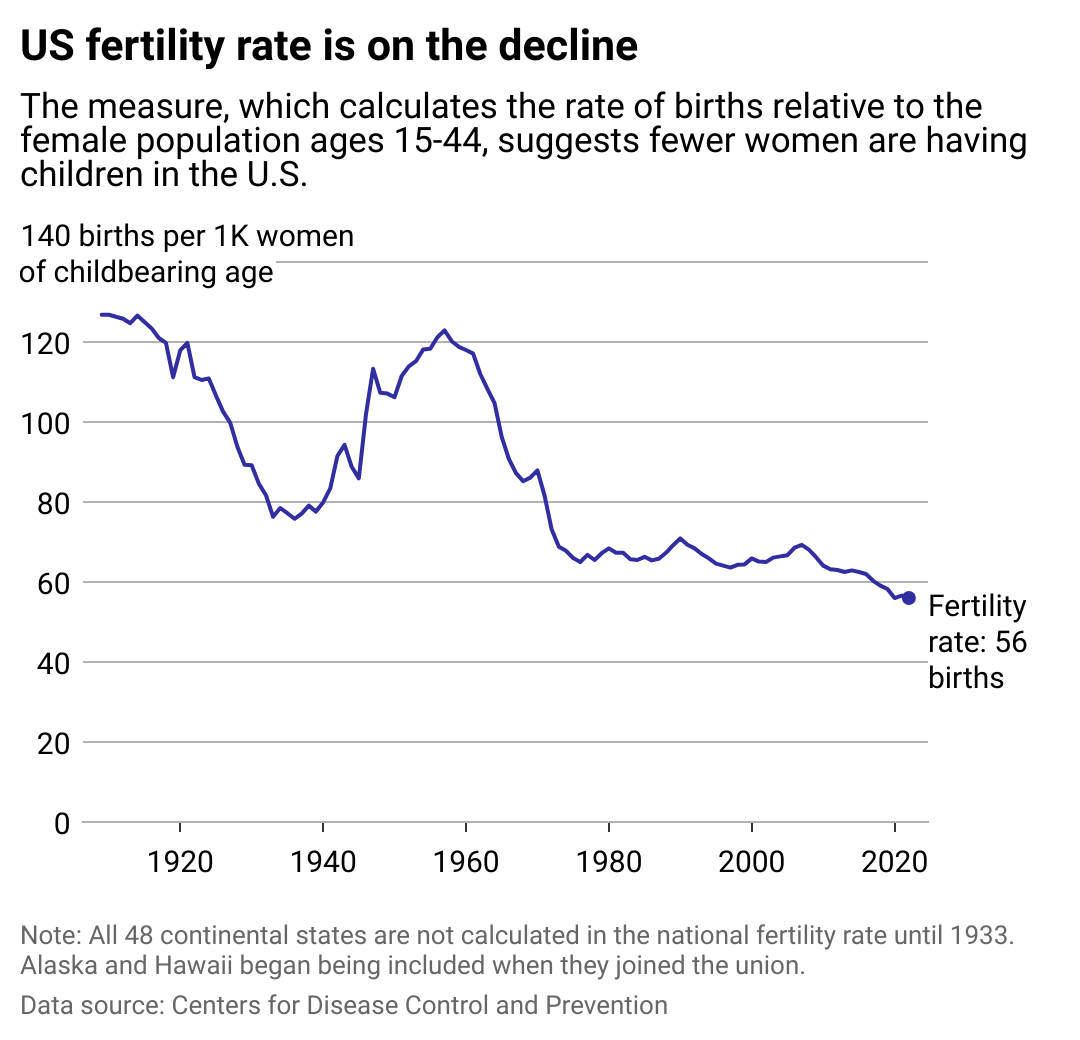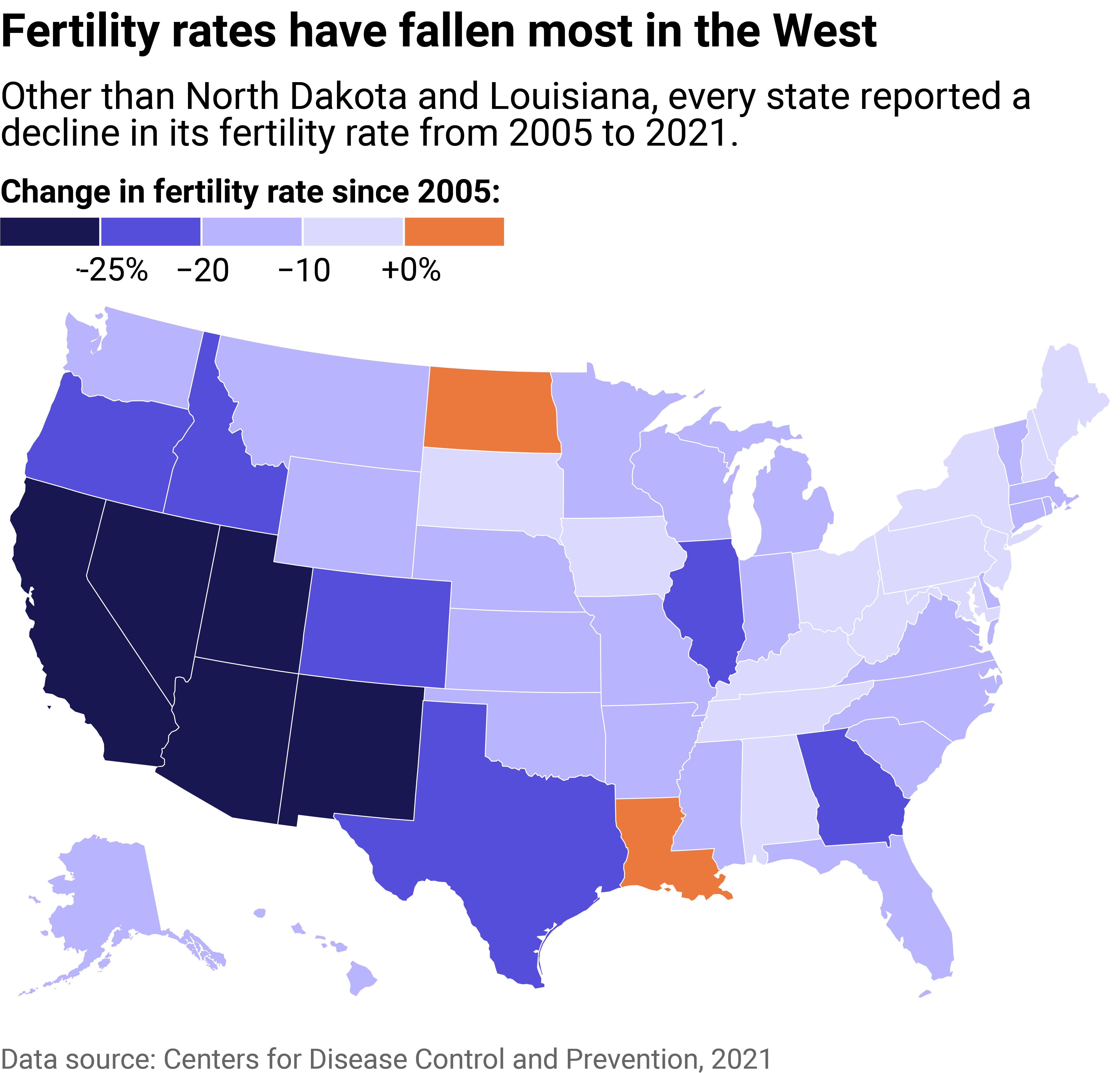The US fertility rate is decreasing: What it means for the nation's future

Natalia Deriabina // Shutterstock
The US fertility rate is decreasing: What it means for the nation’s future
Baby’s hand into parent hands.
Americans have been having fewer and fewer babies since 1957, with fertility rates dropping by more than half—and as a result, the country’s population is quickly growing older.
In terms of reproductive rights, declining fertility rates are a sign of successful advocacy. From an economic perspective, however, a healthy birth rate is crucial to ensuring enough workers exist to keep the engines of the economy strong and provide care for older generations. Japan is struggling with this exact problem right now. In 2015, the United Nations estimated that North America had around four workers to support aging people, but Japan only had around two. By 2050, Japan’s population is slated to drop by 15%, as elders pass on and newborns become less common.
Northwell Health partnered with Stacker to further explore the falling fertility rates in the U.S. with Centers for Disease Control and Prevention data, and what it means for future demographics. While fertility rates are calculated based on a country’s female population of childbearing age, Northwell Health and Stacker recognize that some people in that group may not identify as women.
Some countries, like Singapore, have tried to boost declining birth rates with “pronatalist incentives” like cash gifts to parents with multiple children, extending parental leave, and giving couples with children priority in public housing assignments. But despite varied approaches between 2001 to 2018, which also included grants to companies that give workers more schedule flexibility to accommodate family needs, Singapore’s fertility rate continued to fall, from 1.41 to 1.16.
Poh Lin Tan, a public policy scholar at the National University of Singapore, concluded in a report for the International Monetary Fund that Singapore’s attempts to redirect fertility trends aren’t due to poor policies, but rather are a testimony to “the overwhelming success of an economic and social system that heavily rewards achievement and penalizes lack of ambition.”
It’s a similar story in South Korea, where the pressure to ensure children have all they need to succeed—like expensive tutoring—discourages people from having large families, according to Richard Jackson, president of the Aging Institute, who was interviewed by Axios.
In the U.S., time will tell if the Biden administration’s American Families Plan will boost fertility—but an analysis of similar policies by Hans Johnson, a senior fellow at the Public Policy Institute of California, indicates some may have helped. However, he says the net effect is generally not enough to bring the population back from the brink of decline.
Pinpointing the factors that have led to sustained fertility rate declines in the U.S. is puzzlingly complex. In the Journal of Economic Perspectives, scholars at the University of Maryland and Wellesley College find no relationship between the drop in childbearing and various other factors, such as religion or the financial stresses of student debt and rent prices.
Until the 1990s, women with higher educational levels had fewer children than those with less education. However, a 2015 study by the World Economic Forum found that in the U.S., higher-educated women have higher fertility rates than women with an undergraduate degree or below. That’s possibly due to greater financial stability and more opportunities to support raising children while having a career.
Some experts also report that lower fertility rates are related to higher rates of obesity and increasing urbanization, which leads to higher housing costs. Contraceptive use has undoubtedly affected rates, especially through the Affordable Care Act—and teen pregnancy has dropped 78% since 1991. However, recent state-level abortion bans have made it more tricky to track the effects of policies on fertility.
Immigration, which is responsible for 80% of the country’s population growth in 2022, is one solution to increasing the U.S. population. But fewer young immigrant women are arriving in the U.S., according to a Wall Street Journal interview with Kenneth Johnson, senior demographer at the University of New Hampshire. In fact, during Donald Trump’s presidency, more immigrants left than arrived.
President Joe Biden’s pledge to legalize undocumented, foreign-born residents announced in the first few months of his administration could help immigrants feel more comfortable settling in the U.S., but his proposal doesn’t have enough congressional support to pass. Immigrants’ boost to U.S. fertility rates may be short-lived, according to one scholar’s analysis: Fertility rates of second-generation U.S. residents decline sharply as its members find strong educational and work opportunities.
![]()

Northwell Health
After a few decades of stability, the US fertility rate is falling
Line chart showing the U.S. fertility rate is on the decline. The measure, which calculates the rate of births relative to the female population ages 15-44, suggests fewer women are having children in the U.S. It reached 56 births per 1,000 women of childbearing age in 2022.
Nationwide, between 2007 and 2022, fertility rates dropped by about 19%, according to CDC data.
The health of the economy—as well as major social, health, and historical events—affect family sizes. In times when the economy is poor or unsteady, birth rates tend to decline. That’s what happened before the U.S. entered World War II. The war was followed by the unprecedented “baby boom,” during which 42 million births occurred from 1955 to 1964 alone. That boom collapsed in part due to legalized access to the birth control pill.
The declining fertility rate became more concerning following the Great Recession between 2007 and 2009, when fertility rates dropped below 2.1 children per woman. That is the so-called “replacement rate” needed to maintain population numbers from one generation to the next.
The share of Americans over 65 grew faster from 2010 to 2020 than in any decade in more than a century. The youngest boomers are now 59. As more of them retire and therefore no longer pay into Social Security, funds for supporting retired elders are at risk. But there’s time to act. The 2022 annual report from Social Security’s board of trustees found that at current rates of contribution and withdrawal, the program can pay full benefits until at least 2035.
But elders’ needs are more than financial. To provide enough elder care will require more workers—which will likely include encouraging immigration. Additionally, Axios reports that robot helpers may be utilized to care for aging boomers.

Northwell Health
The rate is falling faster in some states
Map showing fertility rates have fallen most in the West. Other than North Dakota and Louisiana, every state reported a decline in their fertility rate from 2005 to 2021.
Fertility rates aren’t uniform across the U.S. Between 2005 and 2021, only two states had increased fertility rates. Both of those states—Louisiana and North Dakota—have some of the most restrictive abortion policies in the nation. Still, Louisiana reported only a 1.1% increase, and North Dakota saw a rise of 2.9%. Some experts believe that North Dakota’s rising rate can also be explained by the financial boost created by the fracking boom from 2007 to 2009.
On the other end of the spectrum, from 2008 to 2020, California’s fertility rate dropped significantly, from 2.15 children per woman to 1.52.
Also seeing substantial fertility rate declines were politically liberal areas, following the first wave of the COVID-19 pandemic, according to a study in the journal Human Reproduction. With education, economics, politics, and other factors all intertwined, determining what goals to set for the nation’s fertility rates—much less how to achieve them—continues to be a complex puzzle.
Story editing by Jeff Inglis. Copy editing by Tim Bruns.
This story originally appeared on Northwell Health and was produced and
distributed in partnership with Stacker Studio.